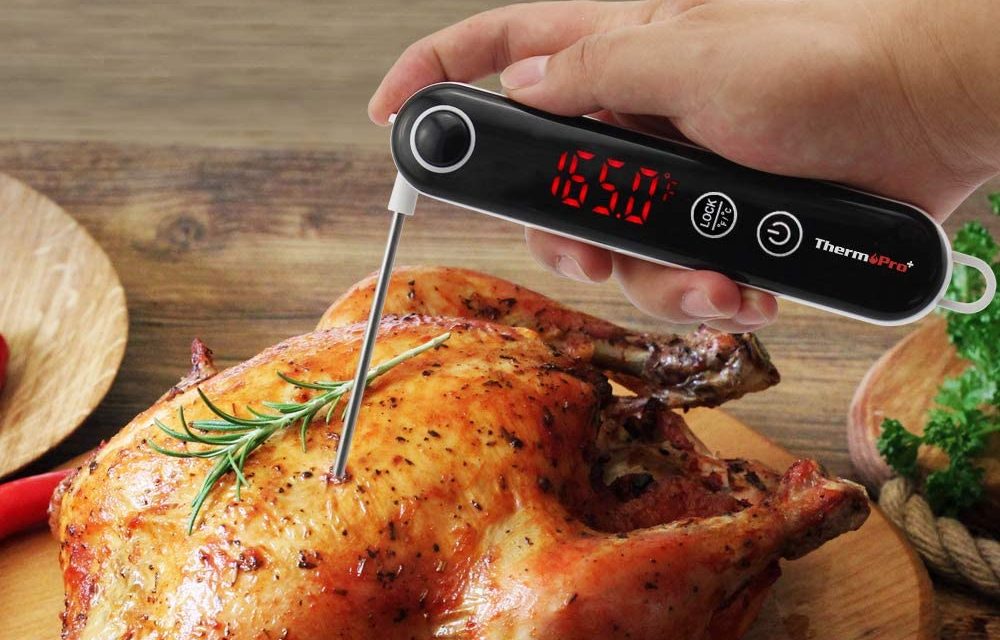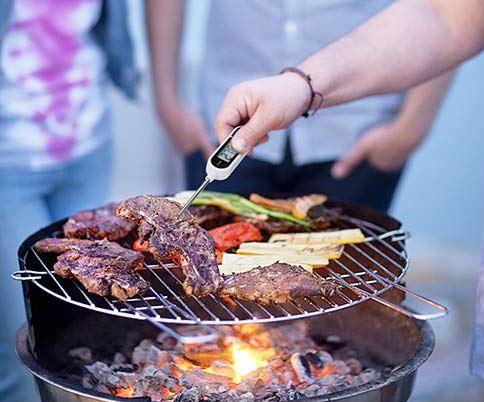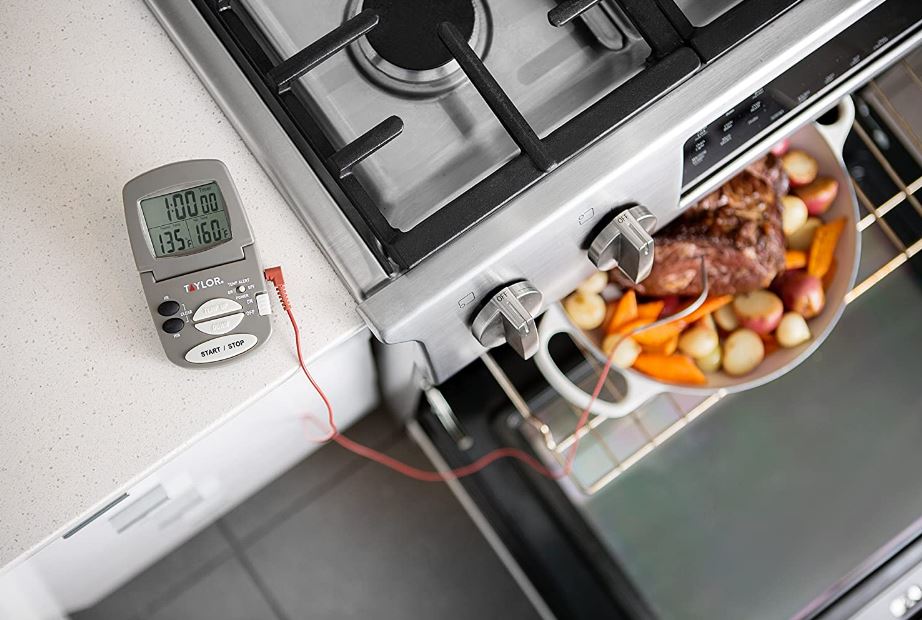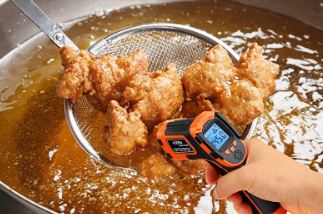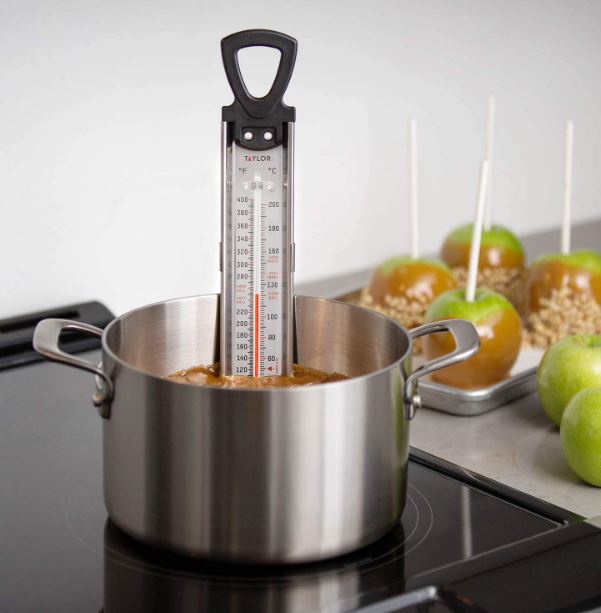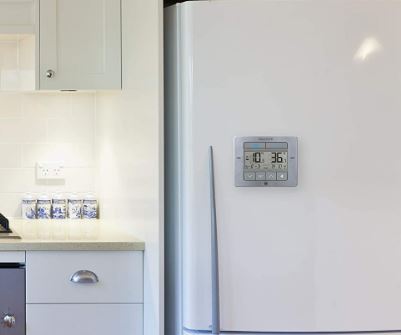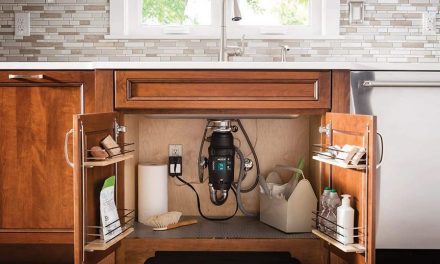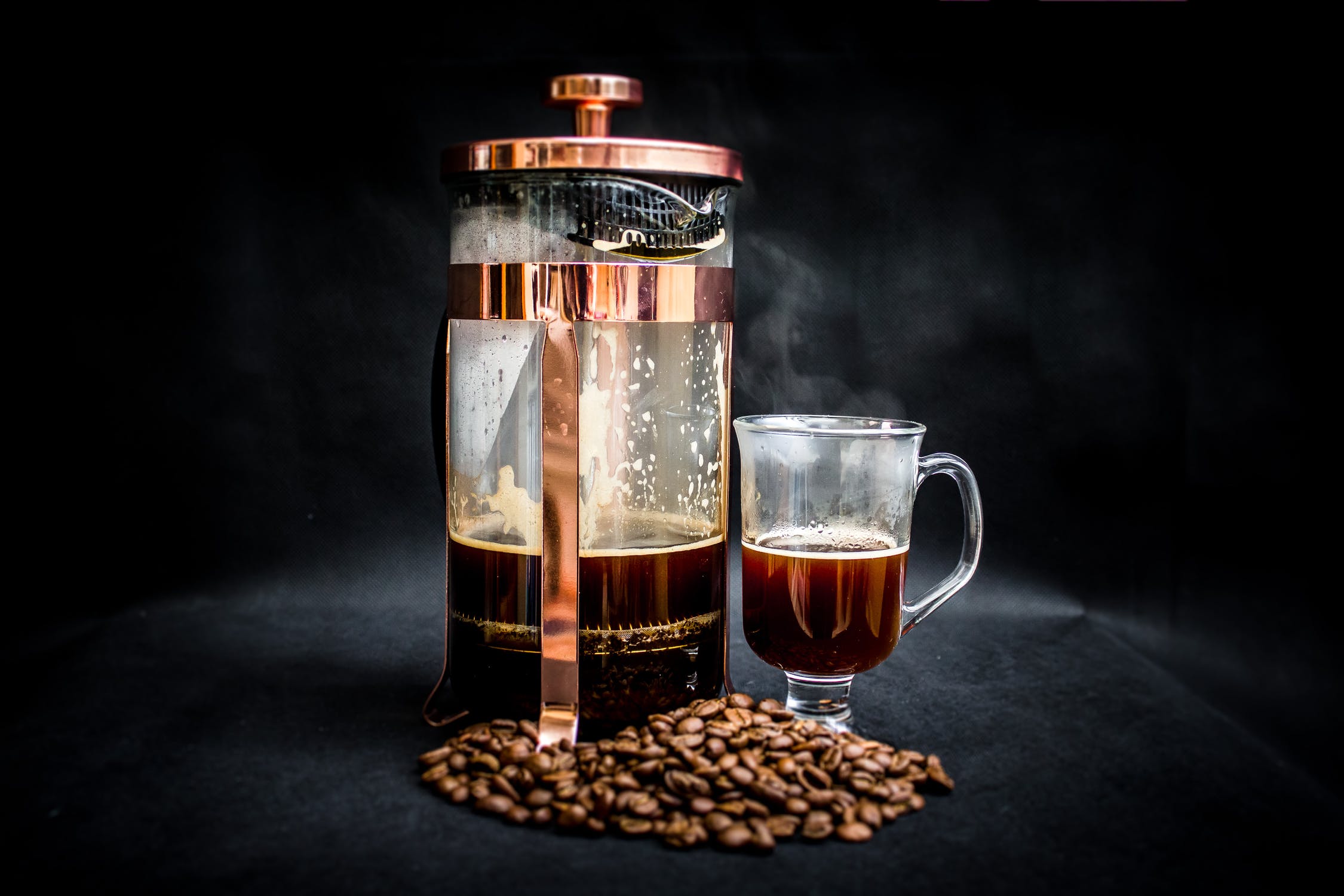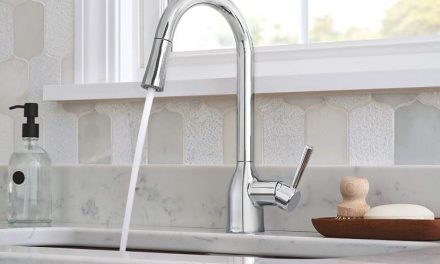For food safety, you can’t beat a thermometer, but food thermometers are useful for far more than that. With a good food thermometer, you’ll know when exactly to take your steak off the grill for perfect doneness, and special thermometers made for ovens or fridges will help you understand how ambient temperatures are affecting your foods.
In this article, we’ll go over the different types of food thermometers and what to look for in a good one. Once you’ve got a good thermometer, there will be no going back to guesswork cooking without one.
Types of food thermometers
Broadly, there are digital thermometers and analog, dial-faced thermometers. Digital thermometers are almost always more accurate than old-style mechanical thermometers, so in general you’ll want to give analog models a pass. That said, analog thermometers continue to have some special uses, as in the case of oven thermometers.
More specifically, thermometers might be thought of in terms of their abilities and uses. Instant-read thermometers and leave-in probe thermometers are two of the most common types, but there are also oven and fridge thermometers, as well as thermometers intended for candy-making or deep-frying.
Instant-read thermometers
When people talk about “meat thermometers,” they’re usually talking about instant-read thermometers. These are the most common type of food thermometer on the market, and with good reason: they’re fast, versatile, generally accurate, and very easy-to-use. Just turn on the device, stick the pointed tip of the probe into your food, and watch it detect the temperature in seconds.
Among instant-read thermometers, you’ll see two shapes, an oblong digital body with a foldable probe, and a stick model, wherein the probe and digital body cannot be moved in any other direction. Most professional cooks and test kitchens recommend the oblong models with foldable arms, as they’re far more versatile.
The vast majority of instant-read thermometers on the market are digital, but it is possible to find analog tools, including among instant-read thermometers. Unsurprisingly, their idea of “instant” is a little slower, and the truth is they’re rarely as accurate without frequent recalibration.
| Good for: | Meats and general cooking; ideal for quick checks to grilling, pan-frying, or boiling foods |
| Not intended for: | Use in ovens or fridges |
| Reading speed: | 2-3 seconds, though analog models are much slower |
| Accuracy: | High, though you may get what you pay for, with models costing $30+ often being more accurate and durable |
| Brands: | Habor, Inkbird, Lavatools, Rubbermaid (analog), ThermoPro, ThermoWorks |
| Price range: | $7-$100+ |
Leave-in probe thermometers (cooking alarms)
These thermometers consist of two separate parts, a base and a probe, both of which are then hooked up by a connecting cable. It’s this separation of the two components that is the main advantage of leave-in probe thermometers, as it means you can go hands-free and leave the probe where it is. You can even close the oven door over the connecting cable, making probe thermometers great for cooking tasks where you don’t want to disturb the cooking process. Roasts, for example, will take a lot long if you’re frequently opening the oven door—losing heat in the process—to check temperature with an instant-read thermometer.
The digital base of these thermometers also often comes with a timing mechanism and an alarm function, which is why leave-in probes are sometimes called cooking alarms. When your food reaches a certain temperature, the base will beep, alerting you that your food is ready. This is great if you want to multitask.
Probe thermometers come in a few different styles:
- Basic or single-probe thermometers have, as you might guess, a single probe that goes between the food and the digital base. This style works well for most kitchens.
- Dual-probe thermometers have two probes connected to the digital base. One is inserted into the food and reads its temperature, while the other is left outside of the food to read the ambient cooking temperature. While this could be useful for your oven, it’s mainly intended for meat smokers, where the ambient temperature of the pit affects the flavor and tenderness of barbecue.
- Wireless probe thermometers are the new kids on the block. The probe inserted into the food isn’t attached to the digital base at all, and there may not even be a digital base, at least not in the traditional sense. You may simply use your phone and an app to interact with the probe via Bluetooth. However the temperature is displayed, the probe has a mechanism to send temperature readings wirelessly.
In testing, probe thermometers are generally found to be less accurate because they remain near the heat source the entire time. This doesn’t mean there aren’t accurate probe thermometers out there, however. You’ll probably just pay more for them.
For ideal food safety, probe thermometers are really used in conjunction with instant-read thermometers. The probe thermometer will alert you to general doneness, and the instant-read will help you ensure that doneness has spread throughout the entire meat.
| Good for: | Useful for any cooking task you want to monitor the temperature of constantly. Also good for checking the temperature of really hot things from a safe distance and for anyone who wants to multitask or step away from the kitchen while the cooking is happening. Dual-probe thermometers are especially useful if you need to keep ambient cooking temperatures in mind. |
| Not intended for: | While probe thermometers can be used for general purposes, they probably shouldn’t replace an instant-read thermometer. but rather work alongside it or only on specific tasks, like cooking a roast. |
| Reading speed: | 5-10 seconds |
| Accuracy: | Relatively high, though not as accurate as instant-read thermometers. |
| Brands: | Inkbird, Meater (wireless), ThermoPro (single-probe, dual-probe, wireless), ThermoWorks |
| Price range: | $17-$100+ |
Infrared thermometer guns
Food thermometer guns can measure the temperature of food from a distance using infrared technology. You’ll probably be most familiar with this style of thermometer from healthcare settings, not kitchens, but they’re common in food processing and professional kitchens.
A huge advantage of thermometer guns is they don’t require any special cleaning between uses unless something splatters on them.
| Good for: | Super fast readings outside of the oven or fridge. Fast/no cleanup. Can even be used for checking the temperature of non-food items. |
| Not intended for: | Constant temperature monitoring. |
| Reading speed: | Extremely fast, <1 second |
| Accuracy: | Relatively high, though accuracy is affected by distance. If you want a precise reading, you may need to get closer to your cooking than is safe (without a mitt), depending on what you’re cooking. |
| Brands: | Etekcity, Inkbird, Kizen, ThermoPro, ThermoWorks |
| Price range: | $12-$40 on Amazon, with more expensive models found on ThermoWorks |
Oven thermometers
Did you know oven temperatures can be off by as much as 50°F? That makes cooking to perfection difficult! In most ovens, the temperature gauge is located at the back or side of the oven, where it is often hottest. That heat may not have distributed yet—and may not be able to without settings adjustments.
Knowing how hot your oven gets, or if it gets hotter in some spots than others, is paramount if you enjoy cooking, especially if you like to bake. To make sure your oven is preheating and cooking at the temperatures it claims it is, you’ll want an oven thermometer.
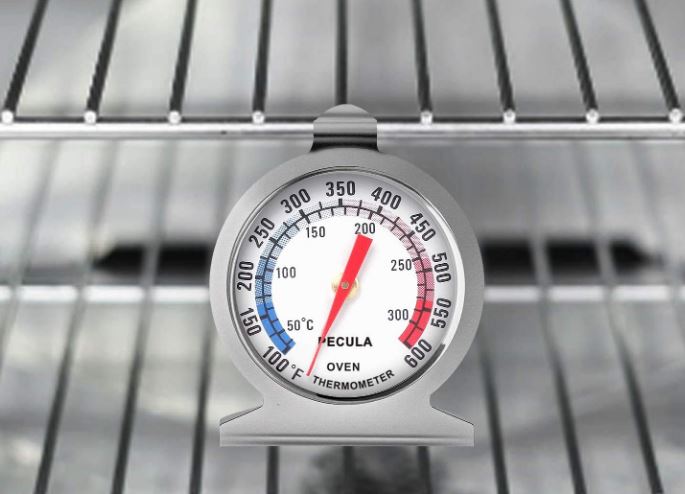
See Pecula’s stainless steel oven thermometer, which can withstand temperatures up to 600°F/300°C.
Most oven thermometers on the market are classic, mechanical thermometers that have dial faces which can withstand extreme temperatures. They’re cheap, easy to use, and easy to read. You can leave them in your oven indefinitely if you want, or simply use them periodically to recalibrate your oven.
Not a fan of analog solutions? Remember you can use leave-in probe thermometers for this same task, and as a bonus, they’re much more likely to be accurate. Just remember they’ll require more counter space, as the digital body with its display must be kept outside the oven at all times.
| Good for: | Making sure your oven is doing what it says it’s doing |
| Not intended for: | Monitoring the temperature of food |
| Reading speed: | Shows temperature as it changes |
| Accuracy: | Mechanical thermometers are rarely as accurate as digital thermometers (so, in this case, leave-in probe thermometers). However, they can be a more accurate representation of your oven’s temperature than what you oven itself will claim. |
| Brands: | CDN, OXO, Pecula |
| Price range: | $3-$14 |
Candy and deep-fry thermometers
Many cooking tasks require careful temperature monitoring, but there’s often a little wiggle room. This is less true for finicky foods, like candies, jams, and deep-frying, where you want to keep temperatures just right throughout the process. This is where candy thermometers excel.
These tall thermometers sit in, or clip onto, pots of boiling/simmering liquid and monitor the temperature for you constantly and safely. Most are old school thermometers with an analog display (don’t worry, though, gone are the days of mercury use). You can also find some simple digital candy thermometers that work a lot like standard instant-read thermometers, just with longer probes.
Note that for absolute precision, you’re better off getting a digital candy thermometer or a leave-in probe thermometer and a clip-on probe holder if it doesn’t have one already. Old-style thermometers just can’t compete with a digital thermometer’s accuracy.
| Good for: | Candy making, deep frying, jelly/jam making, and anything that has boiling or simmering liquid ingredients that you need to monitor continuously. |
| Not intended for: | Typical food monitoring |
| Reading speed: | Shows temperature as it changes |
| Accuracy: | Not as accurate as a leave-in probe thermometer, but if you’re just looking to monitor things in passing, and not necessarily perfectly, there’s nothing wrong with a candy thermometer. |
| Brands: | CDN, Defull, Taylor Precision |
| Price range: | $9-$13 |
Fridge and freezer thermometers
Sometimes you want to monitor more than heat! With so many of our foods requiring refrigeration or freezing, it’s important to know for certain that our fridges and freezers are really as cool as they say they are. It’s even important to know if they’re too cold, as an overly cold freezer can lead to freezer burn, which hurts the flavor and texture of foods.
While you’ll find some mechanical, dial-faced fridge thermometers that look and work an awful lot like oven thermometers, the best on the market are digital thermometers that have some level of water resistance/proofing.
For the most advanced monitoring, consider a digital thermometer that comes with wireless temperature sensors. One is placed in the fridge, while the other goes in the freezer. A third piece, a digital display which can be left in the fridge or put somewhere outside of it, neatly shows the temperature in both locations.
| Good for: | Ensuring food safety, preventing freezer burn |
| Not intended for: | Typical food monitoring |
| Reading speed: | Shows temperature as it changes |
| Accuracy: | Digital fridge/freezer thermometers are more accurate than mechanical ones |
| Brands: | AcuRite, Ardest, Riy, Taylor Precision |
| Price range: | $6-$35 |
What to look for in a food thermometer
Buying a thermometer to monitor your cooking or food safety can be surprisingly overwhelming. There are so many options to choose from! Luckily, there are some things to look for when you’re on the hunt for the right product.
Price
If you don’t want to think about details too much, price can be a relatively good indicator of quality when it comes to food thermometers. Don’t go too cheap with these, as you’ll then pay for them in terms of accuracy and speed.
Most kitchens need an instant-read thermometer at the very least. On the affordable end of those, expect to spend $30-$50. If you cook a lot or find you really make use of a current thermometer more than you expected, consider spending even more on a well-known high-end brand, like ThermoWorks. In most cases, you’ll not need to spend over $100 for a really high-quality food thermometer, no matter its form.
Speed and accuracy claims
Most food thermometer manufacturers don’t claim their thermometers are perfectly accurate, but instead will provide temperatures within 4-5 degrees (Fahrenheit) of whatever the actual temperature is. In many cases, this won’t matter, but if you like your meat rare—making food safety a concern—or want perfect candy, you’re going to want a thermometer that’s able to read closer to the real temperature.
Whenever you buy a new food thermometer, it’s a good idea to put it to the test, not just to make sure you’ve gotten your money’s worth, but also to ensure it can track food safety.
How do you test a food thermometer?
If you’re looking to get a bit nerdy in the kitchen, you can test your food thermometer’s accuracy by subjecting it to cold and hot tests. Highly accurate thermometers will be able to detect the freezing temperature of ice water in seconds, as well as the temperature of boiling water.
Running several of the same tests, and then averaging out results, will give you the best idea of what your thermometer is capable of detecting at these known extremes. If you only want to run one test, go with the safer and easier one: the ice bath. For best results, crush the ice. This will distribute the freezing temperature far better than cubes will.
How do you calibrate a food thermometer?
Thermometer a little “off”? Some can be recalibrated, usually by way of a calibration button, or in the case of analog devices, by screwing a particular nut behind or beneath the dial. Recalibration comes in handy so you won’t have to remember if the device is generally off by a certain number of degrees.
You should only calibrate your thermometer according to the manufacturer’s guidelines. Also don’t do this unless you’re sure the ice bath you’re testing the thermometer in is truly 32°F or close to it. Again, crushed ice will offer better testing conditions than cubed ice.
To learn more about testing and calibration, check out this video from DeltaTrak, a company that specializes in cold chain management and temperature monitoring systems.
Probe length
In general, longer probes are better, especially if you plan to use your food thermometer on especially hot cooking tasks that might splatter. Longer probes keep your hands from getting too close.
General usability
Clear displays with large, easy-to-read numbers are obviously better than the alternative. Don’t overlook the potential usefulness of a backlit display, too. While it might seem gimmicky, it’ll come in handy if you cook in low-light conditions, whether that’s grilling outdoors at night or cooking over a campfire.
There are lots of nice-to-haves you’ll see in the food thermometer market. Whether they’re right for you and your kitchen will really depend on how you cook, but some things to look for might be:
- Adjustable screens, which will let you see them from different angles
- Magnetization for using a (probe) thermometer against the oven door or for storage against a fridge
- In the case of probe thermometers, long, high heat-resistant cables that you can safely close an oven door over are very useful, as are probe clips, which can attach a probe to the edge of a frying pan.
IP ratings
“What’s an IP rating?” you may be asking. In a nutshell, an ingress protection (IP) rating tells you all you need to know about a thermometer probe’s durability. This matters because the more durable a thermometer’s probe, the more protected its temperature-reading electronics are from water and dust. The more protected those electronics are, the more accurate your readings will be—and the more likely they are to stay accurate over time and use.
The International Electrotechnical Commission, or IEC, is the international organization behind IP rating standards. IP code, the definitions behind the ratings, is the durability standard used for lots of different tools and devices, including your smartphone’s water resistance (IP67 and IP68).
Though an IP rating may look like it consists of a single number, it actually consists of two. The first digit in an IP rating, which can range from 0 to 6, tells you how protected your item is against solid objects it may come into contact with. The second digit, which ranges from 0 to 9, tells you how protected it is against different amounts of liquids. You may also see an “X” in an IP rating; this simply means there’s no data available to say whether the device is protected against solids or liquids.
For example, ThermoWorks’ Mk4 Thermapen has an IP67 rating. The 6 means its electronics are completely protected (air tight) against dust particles. The 7 means they will remain safe in liquid so long as the probe isn’t submerged in more than a meter (3 ft 3 in), which isn’t likely to happen in most kitchens.
To see a full breakdown of the IP code, check out this page on Wikipedia.
Food thermometer starter kit
Feeling overwhelmed? While niche thermometers are handy, there are really just a couple most kitchens need.
- Get an instant-read thermometer. There’s a reason chefs love them, and they’ll be all you need for most tasks. Lavatools’ Javelin Pro instant-read thermometer is a good bet and within the price range one can expect to find higher-quality thermometers. If $50 is more than you’re willing to spend, consider ThermoPro’s well-rated thermometer.
- Do far more than pan fry or want to step away from your kitchen while you cook? Consider a probe thermometer, like ThermoPro’s, probably in conjunction with your instant-read thermometer, not instead of. These are surprisingly versatile tools that can monitor temperatures in foods, pots and pans, and even ovens, if they have the cable length to support it. Just don’t be surprised if you need to spend more for an accurate one. America’s Test Kitchen swears by the ThermoWorks brand and its ChefAlarm.
- Just after the perfect steak? While both of the above thermometers can help get you there, you might also consider changing the way you cook. Sous vide cookers, especially immersion circulators, are incredibly precise and don’t require you to be in the kitchen while they’re working, or even necessarily in your house. This is the secret weapon behind some steakhouses’ perfectly-cooked steaks.

